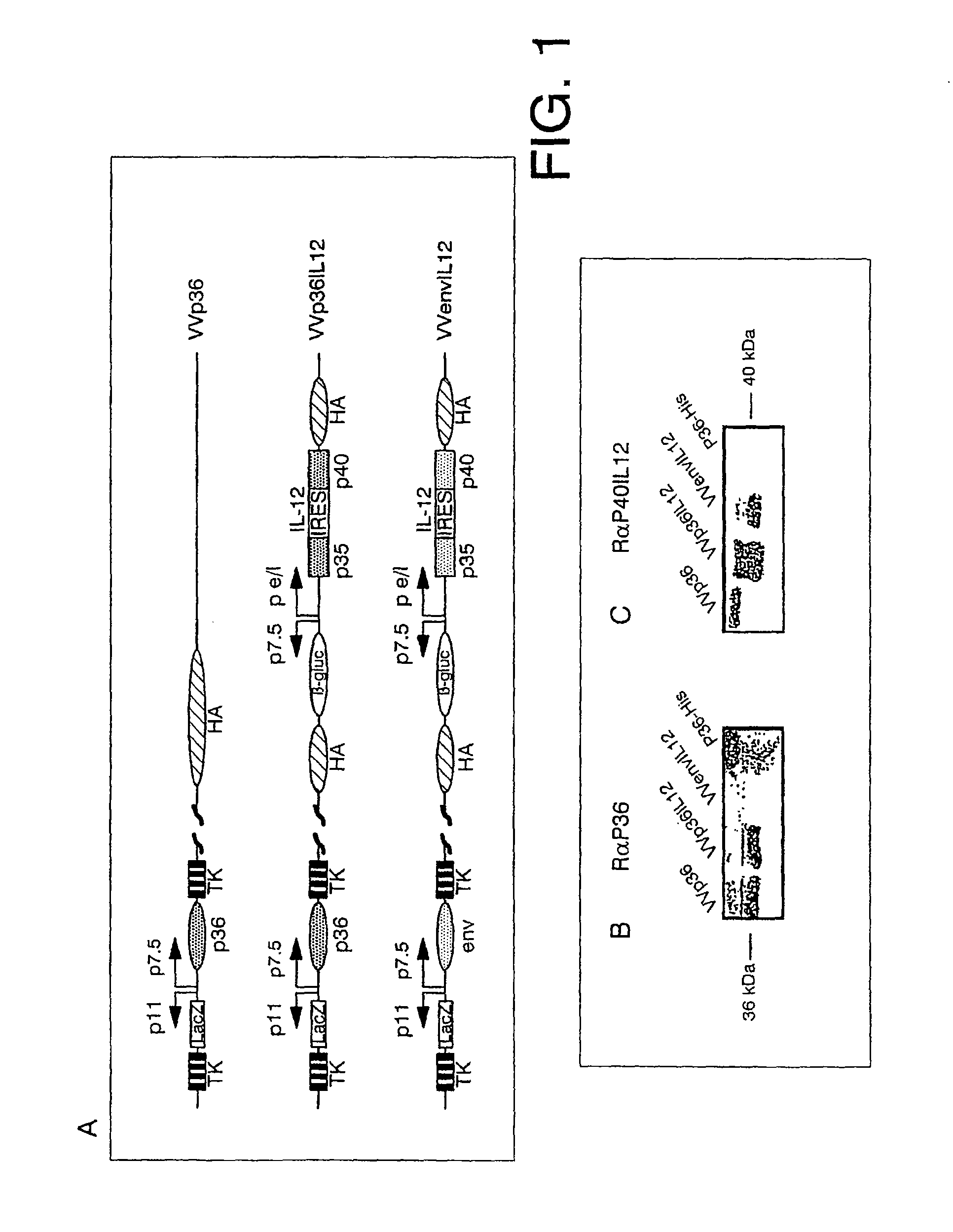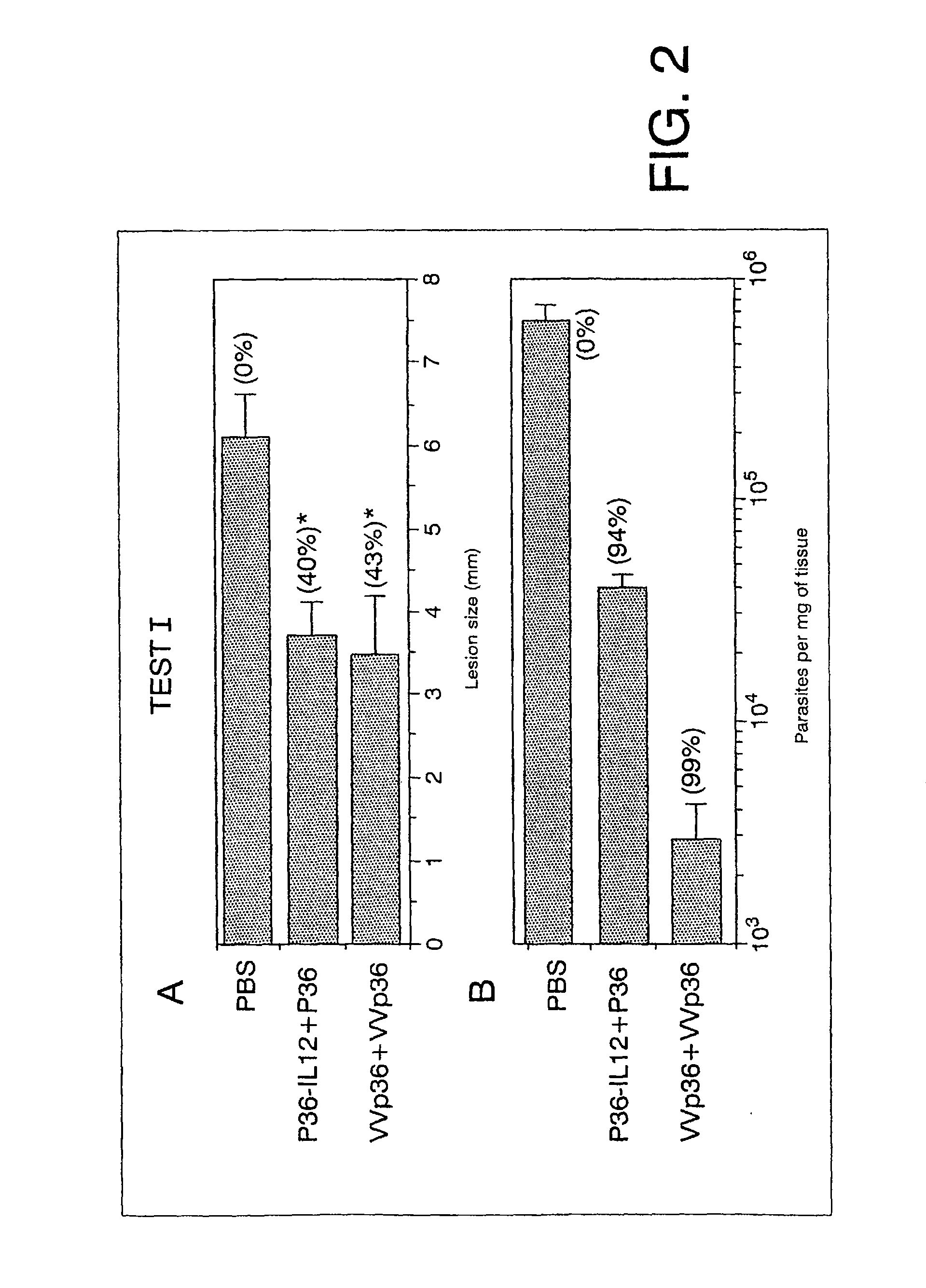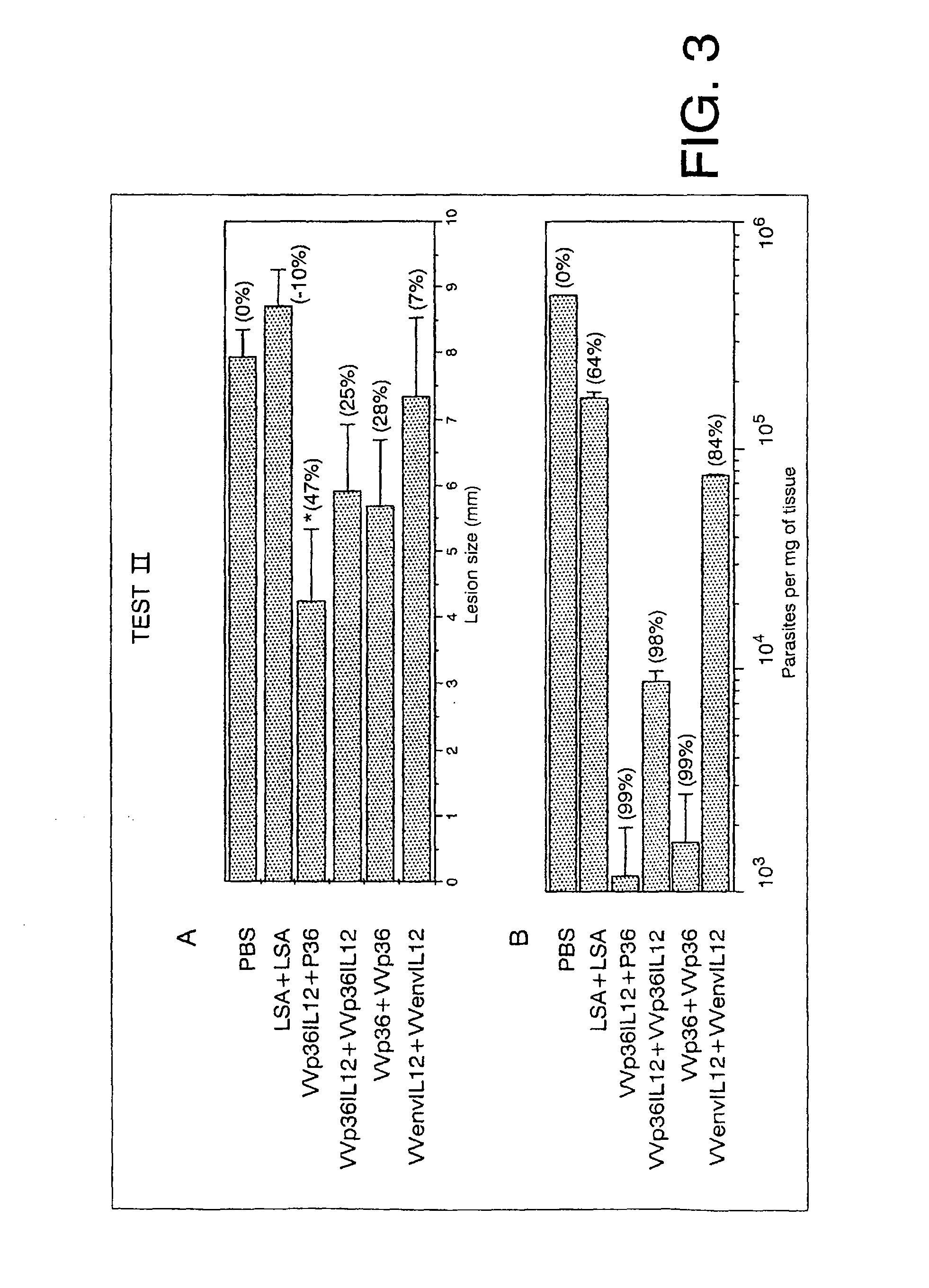Vaccine to protect animals against leishmania
- Summary
- Abstract
- Description
- Claims
- Application Information
AI Technical Summary
Benefits of technology
Problems solved by technology
Method used
Image
Examples
example 1
Construction of Recombinant Vaccinia Virus
[0121]To study the protection viability of mice susceptible to infection caused by Leishmania, 2 different rVV were generated: one expressing the antigen P36 of L. infantum (VVp36) and the other simultaneously expressing the antigen P36 of L. infantum and the sub-units P35 and P40 of murine IL-12 (VVp36IL12). Likewise, a control rVV was constructed that expressed the product of the env gene of HIV-1 and the sub-units P35 and P40 of murine IL-12 (VVenvIL12). In FIG. 1A, is shown the schematic representation of the genomes of these rVV.
1.1 Construction of an rVV that Expresses the Antigen P36 of L. infantum
[0122]the gene that codifies for the protein P36 of L. infantum was obtained from a previously described genome library (29). It was cloned in the insertion plasmid of VV pSC11 under the control of an early / late viral promoter p7.5 in the locum of thymidine kinase (TK). This plasmid contains the, β-galactosidase gene of E. coli under the co...
example 2
Immunisation and Exposure to the Infection
2.1 Test I
[0132]After confirming the correct expression of P36 of L. infantum and of murine IL-12 in the generated rVV (VVp36 and VVp36IL12), a vaccination experiment was carried out to establish whether immunisation with VVp36 induced protection in comparison with the purified protein P36 of L. infantum (Test I). For this, groups of 4 mice were initially treated (primed) with VVp36 (5.times.10.sup.7 pfu / mouse) intraperitoneally (i.p.) or with P36 soluble (30.mu.g). In this latter case, immunisation was carried out under optimum conditions for protection presented by other researchers (22) and, therefore, the priming included P36 together with recombinant soluble murine IL-12 (1.mu.g) (Genzyme, Cambridge, Mass.), subcutaneously (s.c.). As a control, a group of nonimmunised mice was used (treated with PBS). Two weeks after the first immunisation (14 days post immunisation (dpi)), the animals were administered a booster dose with either solubl...
example 3
Characteristics of the Immune Response Produced by Different rVV Before and after Exposure to Promastigotes of L. major
3.1 Humoral and Cell Immune Responses Before and after Exposure to L. major
[0148]The immune response provoked in mice susceptible to infection by Leishmania is of the type Th2 and this response has been co-related with the progress of the disease (47-49), whereas the production of cytokines such as IFN-γ and IL-12 has been co-related with the resolution if the disease (50, 51). So as to induce protection against Leishmania infection(10, 11) could require the activation of an immune response of the type Th1, the type of immune response generated before immunisation with the rVV generated has been determined. For that, the researchers characterised the relation between a characteristic response of type Th1 with majority production of IgG of isotype 2a and IFN-γ) (52) and a response of type Th2 (with majority production of IgG of isotype 1 and IL-10) in the groups of...
PUM
| Property | Measurement | Unit |
|---|---|---|
| Power | aaaaa | aaaaa |
| Power | aaaaa | aaaaa |
| Power | aaaaa | aaaaa |
Abstract
Description
Claims
Application Information
 Login to View More
Login to View More - R&D
- Intellectual Property
- Life Sciences
- Materials
- Tech Scout
- Unparalleled Data Quality
- Higher Quality Content
- 60% Fewer Hallucinations
Browse by: Latest US Patents, China's latest patents, Technical Efficacy Thesaurus, Application Domain, Technology Topic, Popular Technical Reports.
© 2025 PatSnap. All rights reserved.Legal|Privacy policy|Modern Slavery Act Transparency Statement|Sitemap|About US| Contact US: help@patsnap.com



